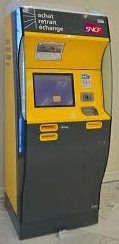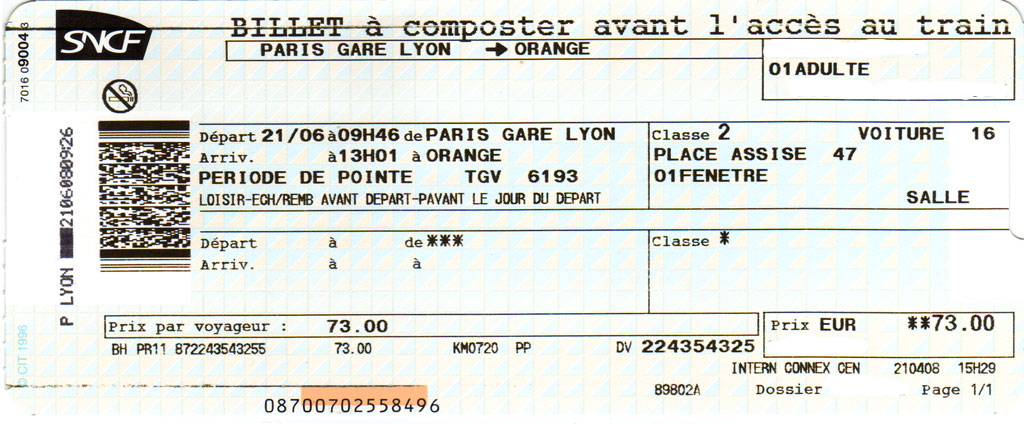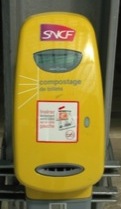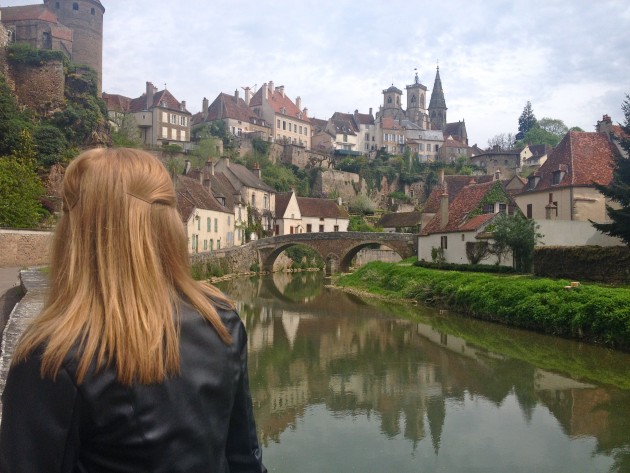*Although this first photo is my own, I apologize for the stock photos that follow! They may not be the best, but I think they help to get the job done.
Paris is probably one of the first places that comes to mind when you think of France, but when planning a trip to France, don’t stop there! Metropolitan France is made up of 13 different regions (there were 22 regions before January 1, 2016), and each region differs in cuisine, traditions, etc. France isn’t a small country, it’s slightly smaller than Texas. So what is the easiest way to see it all? By train!
Of course, you could rent a car, or you could covoiturage (www.blablahcar.fr), but my preferred method of transportation is by train. French trains are easy to navigate once you get the hang of it, so here are some need-to-know tips before you begin your travels!
- Recognize the difference between TER (Transport Express Régional) trains and TGV (Train à Grande Vitesse) trains. TER trains are regional trains that travel slower and tend to make more stops, TGV trains are high-speed trains that will get you to your end destination much faster. TGV trains are usually more expensive, but are much more comfortable and will shave some hours off of your travel time. Also, make sure to compare prices between first and second class travel, sometimes first class is actually cheaper or very close in price!
- Purchase a discount pass if you expect that you will be traveling often by train during your trip. While in France, I purchased a “carte jeune”, which saved me between 25-60% on every train ticket I purchased. This specific card is a discount card for those between the ages of 18-27. The card costs 50 euros and is valid for one year. You must purchase your discount card before travel as you will be expected to present your valid card with your ticket when the conductor preforms a ticket check. There are discount cards for families, for weekend travel, etc. and children under 4 travel free, so there are a lot of options you can take advantage of. You can read more about it here: http://tgv.en.voyages-sncf.com/en/discount-railcards-tgv

- Extra note: The carte-jeune requires a passport-type photo (and other discount cards may as well), so make sure to have a little photo on hand, or you can find ticket booths in almost every train station. Be sure that you receive a sticker to adhere your picture to your discount card from the ticket office! Do not forget this, my boyfriend was harshly scolded by a conductor for not having the proper sticker.
- You can purchase train tickets in any train station, either in
 the ticket office or at one of the yellow/grey ticket machines that you will find throughout the train station. Be aware that these machines only accept chip-cards. I have never had success using them with my American debit or credit card, so just a heads up not to panic if your form of payment is not accepted. If that is the case, head straight to the ticket office, or purchase your ticket in advance online. You can purchase tickets from the official www.sncf.com website, but unfortunately my credit card never seemed to work on there as well, so I always use www.capitainetrain.com. Although I have never used the site www.ouigo.com, I’ve heard you can get great discounted tickets here, I would just double check to make sure that the train stations are centrally located before booking!
the ticket office or at one of the yellow/grey ticket machines that you will find throughout the train station. Be aware that these machines only accept chip-cards. I have never had success using them with my American debit or credit card, so just a heads up not to panic if your form of payment is not accepted. If that is the case, head straight to the ticket office, or purchase your ticket in advance online. You can purchase tickets from the official www.sncf.com website, but unfortunately my credit card never seemed to work on there as well, so I always use www.capitainetrain.com. Although I have never used the site www.ouigo.com, I’ve heard you can get great discounted tickets here, I would just double check to make sure that the train stations are centrally located before booking!
- If you purchase your tickets online, be sure to print your ticket at home, otherwise you can retrieve your ticket at one of the ticket machines in the train station using the reference number you were given at the time of purchase, as well as your (the traveler’s) last name.
- Looking at your ticket, you will notice that (su
 rprise!) it prints in French. A lot of people don’t realize that they have an assigned seat, but if you are traveling by TGV, you will in fact have an assigned seat. Look for which car you are in (voiture), and which seat (place assise) you have.
rprise!) it prints in French. A lot of people don’t realize that they have an assigned seat, but if you are traveling by TGV, you will in fact have an assigned seat. Look for which car you are in (voiture), and which seat (place assise) you have.  You will find the car number on the side of the train next to (or sometimes on) the door of the train. Once inside the train, stow your luggage and look for your assigned seat. Sometimes someone will tell you that you’re in their seat, and sometimes you will have to politely ask someone to get out of yours. If it’s your seat, stand your ground, because you won’t want to get stuck without a seat on a fully booked train! (Just make 100% sure that it is in fact your assigned seat).
You will find the car number on the side of the train next to (or sometimes on) the door of the train. Once inside the train, stow your luggage and look for your assigned seat. Sometimes someone will tell you that you’re in their seat, and sometimes you will have to politely ask someone to get out of yours. If it’s your seat, stand your ground, because you won’t want to get stuck without a seat on a fully booked train! (Just make 100% sure that it is in fact your assigned seat).
- Before boarding the train, COMPOST YOUR TICKET! This is very important! There are little yellow machines all over the train station, and you must stamp your ticket using this machine before boarding your train. Be aware that you will not find these machines on the actual platform, so make sure to do it as you’re walking to your train. Not composting your ticket will result in a fine from the train conductor, and you will probably also get scolded in French. If by some chance you forget, find a conductor on your platform, or immediately when you board the train, to have your ticket composted.
- Keep your valuables safe. Luckily (knock on wood), I have never been pick-pocketed while traveling, so just use common sense. Keep your luggage as close to your seat as possible, and keep all valuables with you, especially if you’re planning on taking a nap.
- Extra tip: request a window seat (fenêtre) when purchasing your ticket so you can enjoy the view.
Do you have any additional tips on traveling by train in France? Let us know in the comment section!

